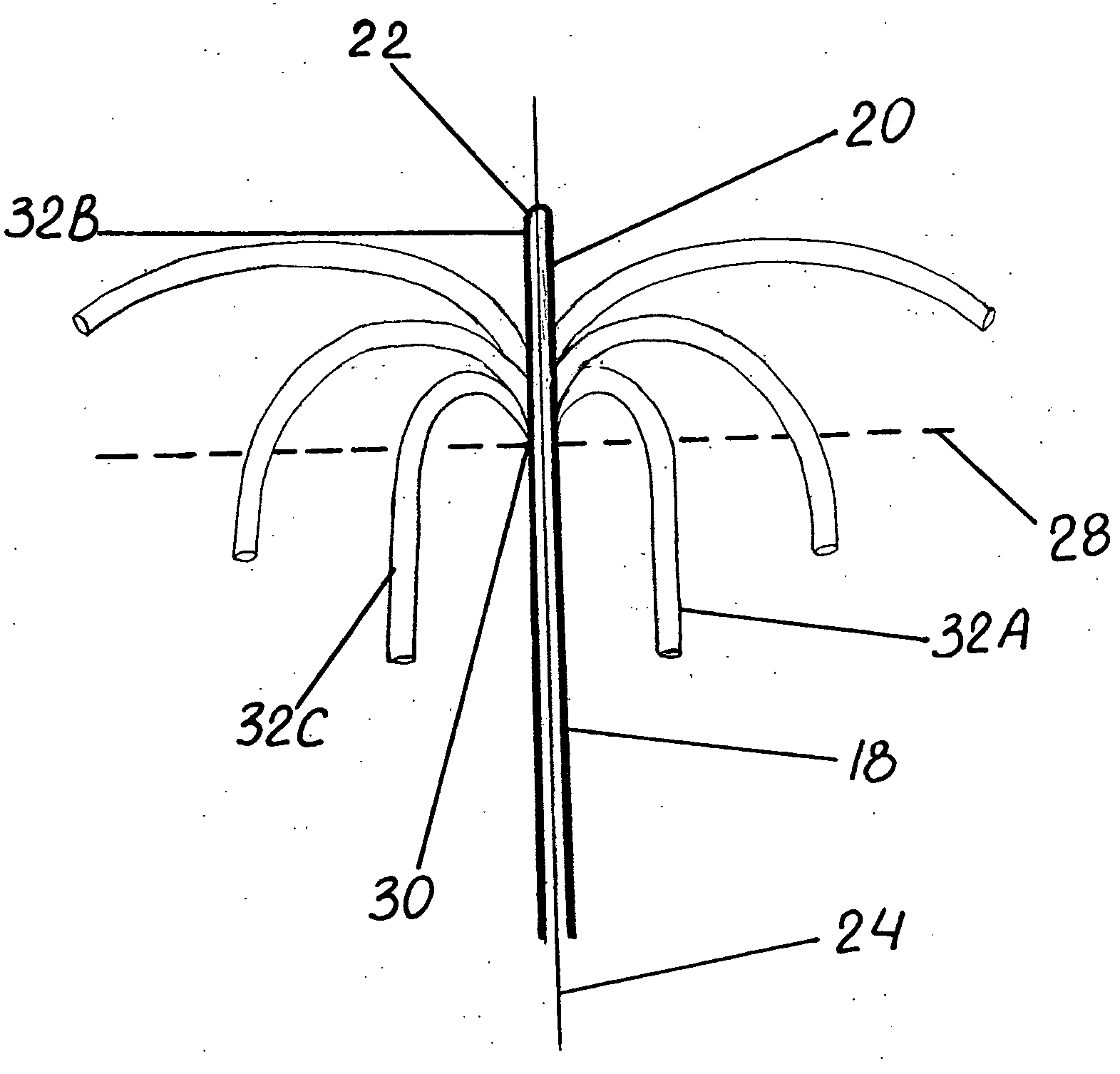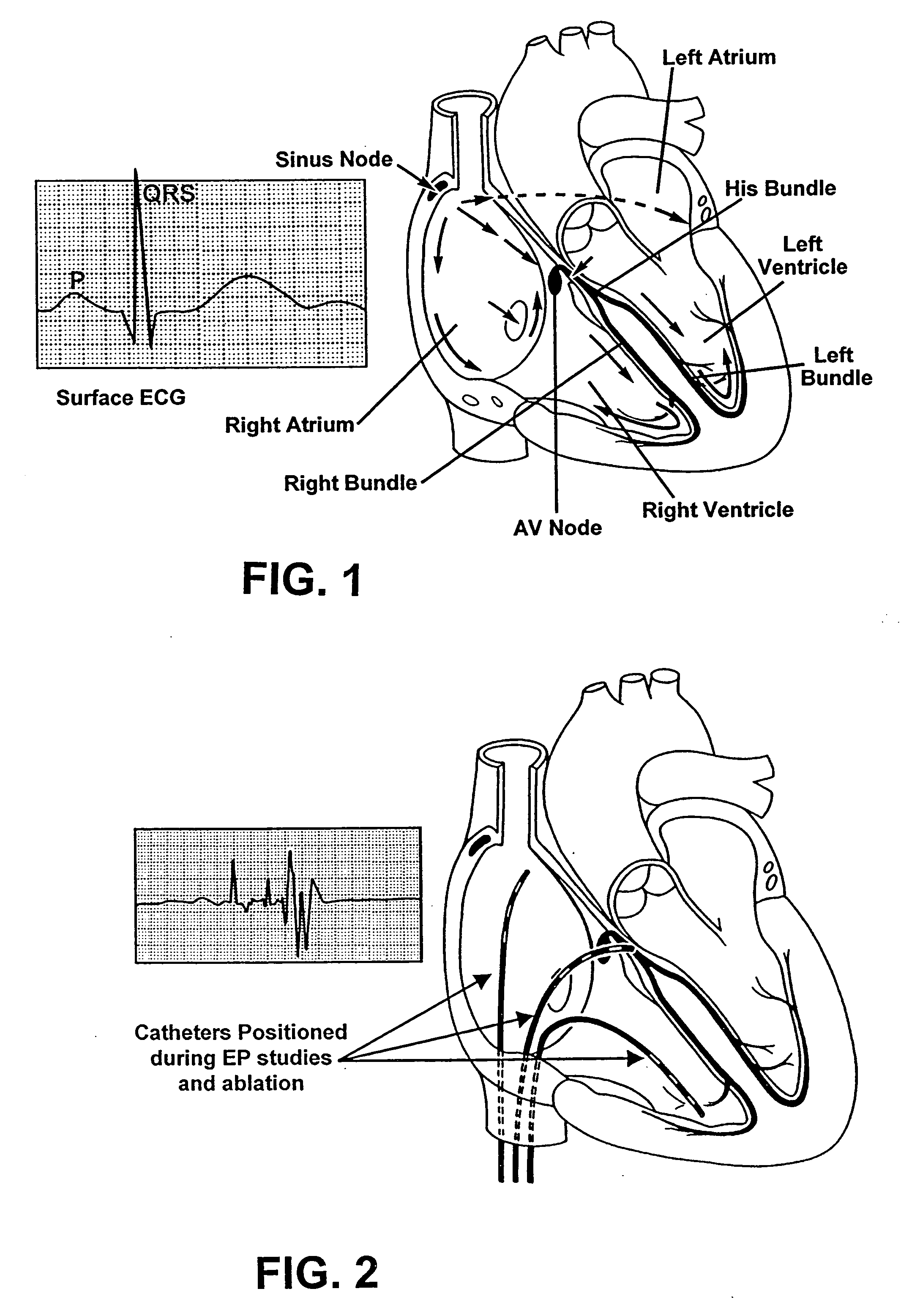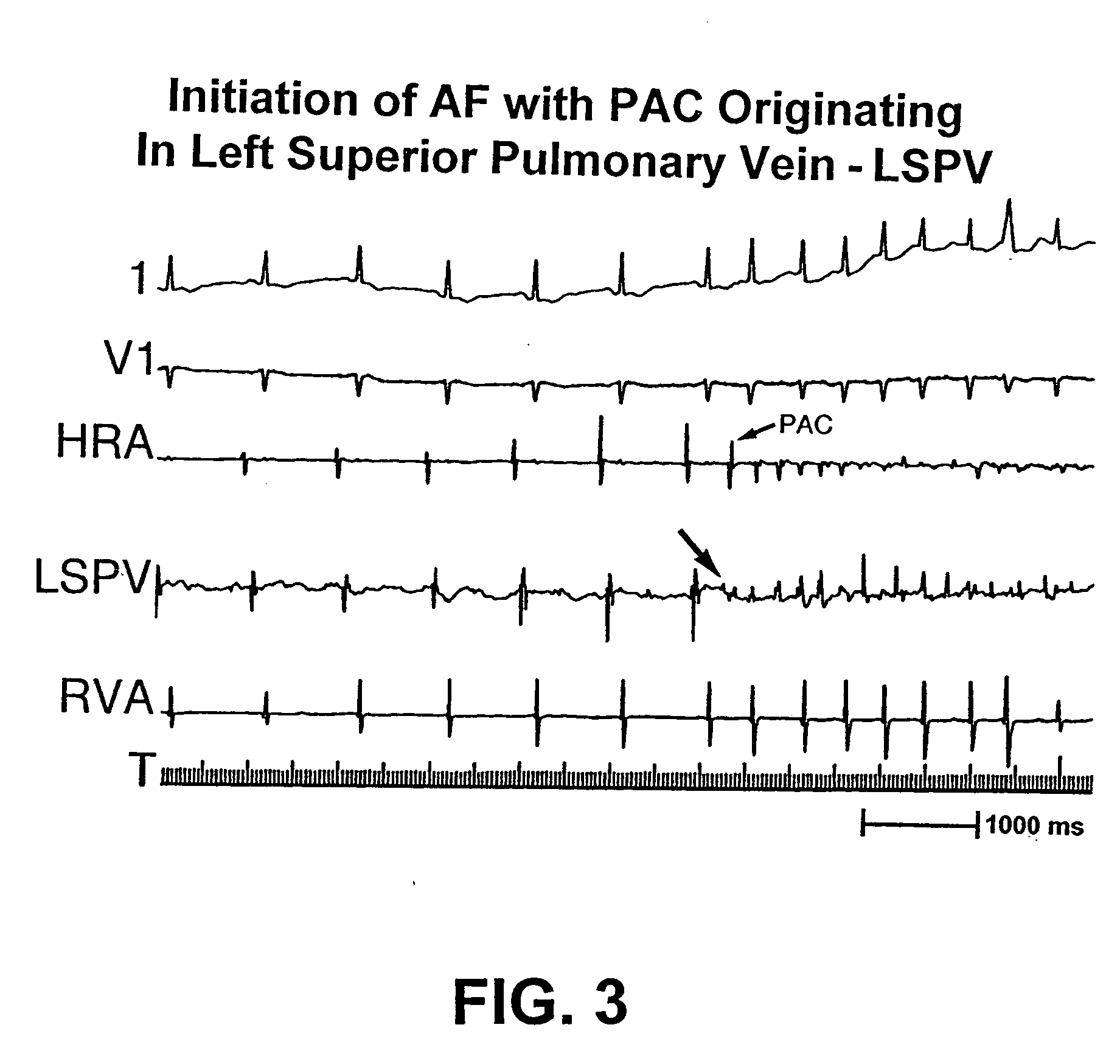Catheter apparatus for treatment of heart arrhythmia
a catheter and heart arrhythmia technology, applied in the field of catheter apparatus and methods for treating heart arrhythmias, can solve the problems of ominous prognosis, high incidence of such complications, and major causes of mortality and morbidity
- Summary
- Abstract
- Description
- Claims
- Application Information
AI Technical Summary
Benefits of technology
Problems solved by technology
Method used
Image
Examples
Embodiment Construction
[0050]FIG. 1 illustrates the normal electrical conduction in the heart. An electrical impulse starts in the sinus node and depolarizes or activates both atria. This is depicted as a P wave on the surface ECG. Following this, the impulse travels to both ventricles via the AV node and bundle of His. Ventricular activation or depolarization is depicted as QRS complex on the surface ECG.
[0051] As shown in FIG. 2, during electrophysiological studies, intracardiac catheters are positioned in the high right atrium, His bundle region and the right ventricle. Programmed delivery of electrical impulses in various chambers can help initiate the clinical rhythm problems in the laboratory. An attempt is then made to move the ablation catheter to the desired location and the procedure of ablation is performed. This technique is adequate only in patients who have sustained stable rhythm problems which can allow movement of catheters sequentially. In patients with arrhythmias like AF, the rhythm b...
PUM
 Login to View More
Login to View More Abstract
Description
Claims
Application Information
 Login to View More
Login to View More - R&D
- Intellectual Property
- Life Sciences
- Materials
- Tech Scout
- Unparalleled Data Quality
- Higher Quality Content
- 60% Fewer Hallucinations
Browse by: Latest US Patents, China's latest patents, Technical Efficacy Thesaurus, Application Domain, Technology Topic, Popular Technical Reports.
© 2025 PatSnap. All rights reserved.Legal|Privacy policy|Modern Slavery Act Transparency Statement|Sitemap|About US| Contact US: help@patsnap.com



